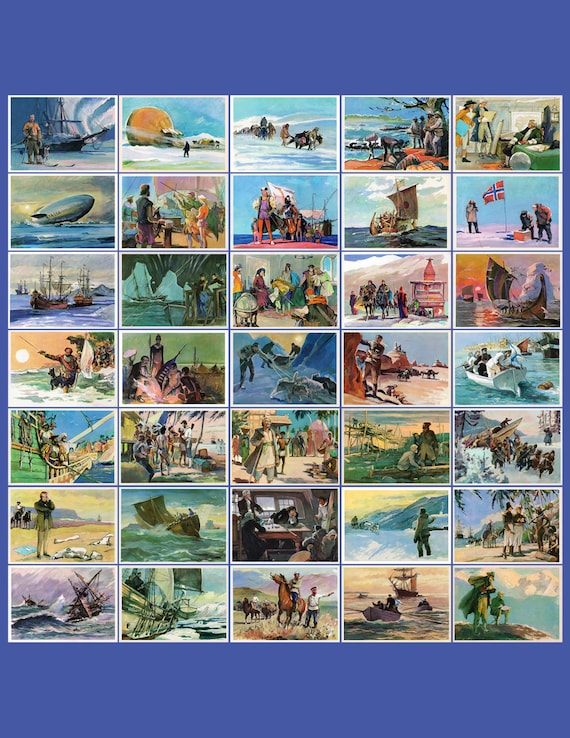From time to time I go fishing into Google and I almost always come back home satisfied and pleasently surprised when I find something which at least is new for me. This time the deep ocean of internet has let me catch this little prey. An interesting sketch which shows several crew members of the Franklin expedition dragging two boats with sails.
http://www.postcardgallery.net/explorers.html |
Judging by their outfit it is clear that this post card was based on the famous painting by Thomas Smith. From the determination of their countenances and from their apparently strong attitude one would say these men were days if not weeks far from the moment on which Thomas Smith depicted a very different scene:
They forged the last links with their lives': Sir John Franklin's Men Dying by Their Boat During the North-West Passage Expedition by W. Thomas Smith |
I have found this little jewel in a Post Card dedicated web site. The author, P. Pavlinov from Moscow drew in 1979 a collection of 35 post cards representing 35 different explorers. Hidden under a blue nice cover the author´s choice includes some well known polar explorers like Salomon Andree, Nansen, Robert Falcon Scott, Amundsen, Nobile, etc.
| Geographical discoveries http://www.postcardgallery.net/explorers.html |
I don´t know nothing about the author, those are the paradoxes of Google, sometimes it allows you to catch rare items like this but it shows itself hermetic to let you know nothing about the people who are behind the scenes. Perhaps any Russian visitor of the blog could put some light about the author´s career.
I don´t know nothing about the author, those are the paradoxes of Google, sometimes it allows you to catch rare items like this but it shows itself hermetic to let you know nothing about the people who are behind the scenes. Perhaps any Russian visitor of the blog could put some light about the author´s career.
For those who love to collect Franklin related stuff, following the link under the next picture they could buy the 35 post card set for a very decent price:
 |
| https://www.etsy.com/listing/213863965/geographical-discoveries-artist-p |

W. Thomas Smith's first name was William. There is some mystery about who he actually was, according to the website of the National Maritime Museum in England.
ResponderEliminarOr William St Thomass Smith, as this site says. Mistery chases the Franklin expdition to its most recondite corners :
Eliminarhttp://www.askart.com/artist/William_St_Thomas_Smith/83632/William_St_Thomas_Smith.aspx